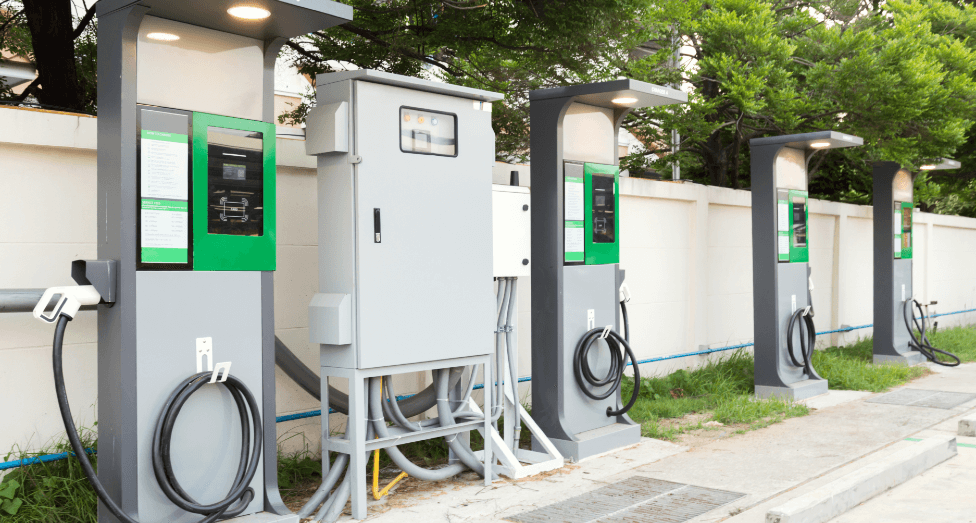Can the U.S. Charging Infrastructure Keep Up with EV Demand?
Is the U.S. electric vehicle charging infrastructure too far behind to keep up with demand? What are some of the roadblocks to building out this network?
As electric vehicle adoption surges, one major concern remains—can the U.S. charging network keep pace? With more EVs hitting the road, the demand for reliable, fast, and accessible charging stations is skyrocketing. While federal and state initiatives aim to expand infrastructure, challenges like slow charger deployment, inconsistent coverage, and outdated grid capacity pose serious roadblocks. This article explores whether the current charging network is enough, what improvements are needed, and how this issue could impact EV ownership in the coming years.
An EV surge
Electric vehicles have become increasingly popular and more widespread in recent years. The increased demand for EVs means a greater need for more public charging stations and a much better electric grid that can handle greater capacity. There may be some serious roadblocks that will keep the number of EV owners from growing, causing automakers to rethink their investment into electric vehicles. How could these challenges impact the need for improvements in the coming years? Could we see more reliable, fast, and accessible charging systems in the future?
A Band-Aid Fix
Tesla came to the rescue, to some degree, of the charging infrastructure. Previously, only Tesla-branded vehicles could use the company’s Supercharging network, but once a deal was struck, many vehicles could use these charging stations. This meant drivers with NACS-compatible charging plugs could pull up at a Teal Supercharger and plug in. Tesla allowed access by updating the software in most stations, but non-Tesla vehicles still charged at slower speeds than Tesla models. Still, adding these charging stations increased the number of available public charging stations significantly, but this only provides a band-aid fix at best.
The original plan thwarted
When the decade began, President Joe Biden drafted Presidential Orders to increase the number of public charging stations to 500,000. This project, funded by the federal government, was a good start, but most experts could not have predicted the demand for EVs that would grow furiously over the next few years. As emissions regulations became stricter, more drivers began to choose EVs. Automakers have dumped billions of dollars into developing electric vehicles, and the need for more than one million charging stations has become evident. Unfortunately, the growth of this network has already hit another major roadblock.
A huge roadblock
The political climate in the United States is tenuous at best. Unfortunately, when one party succeeds another in the Oval Office, the work of the previous administration can sometimes be in jeopardy. This is exactly what happened beginning on January 20 of this year. Immediate orders were put in place when the newly elected official took office, and Joe Biden’s term was over. This mean the billions that had already been spent on the EV charging infrastructure would go to waste unless plans continued, but that wasn’t the order given.
Why the stoppage of EV charger growth?
When parties fundamentally disagree and are extremely opposed to each other, the country can sometimes suffer. Despite the growing demand for EVs, which should translate immediately to the need for more public charging stations, the latest administration paused billions of dollars that were already allocated to states to build fast electric car chargers. Some states halted work on Inauguration Day, but some continued on. Many of those have since stopped building chargers due to the stoppage of federal funding coming from the most recent orders of the White House.
The power grid could be problematic
Although the current EV climate has cooled, especially since January, it’s expected that nearly half of all vehicles sold in the U.S. by 2030 will be electric. This means half the drivers will switch from using fossil fuels to renewable electricity, but there might be a serious problem. The current electric grid isn’t likely capable of keeping up with the demand required to fuel this many EVs. The electric grid is an aging system that’s built for a world that uses fossil fuels for many things.
Some automakers have produced more band-aid solutions including using EVs as battery backups for the electric grid. Part of the issue is the grid isn’t made to store energy, only supply it at an on-demand basis. This electric grid needs to be updated with storage facilities to back up the on-demand portion.
The EV charging infrastructure might be in jeopardy of failing miserably thanks to much higher demand than originally expected, the halting of federal funds, and an aging electric grid. Can anything be done to save this part of the automotive industry?

